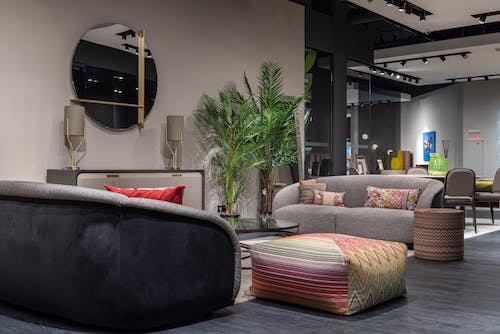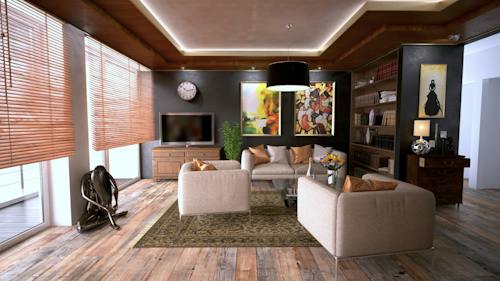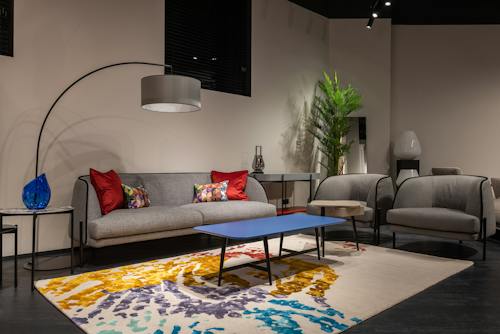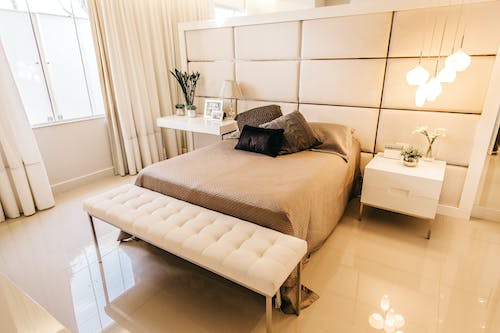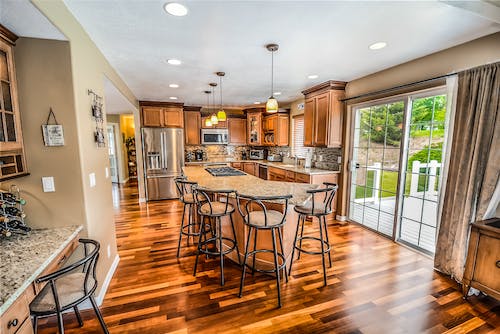Creating a Vibrant Space: How to Design a Colorful Living Room
As a homeowner, you want your living room to be a warm and inviting space that reflects your personality. One way to achieve this is by using color. A colorful living room design can be playful, energetic, and visually stimulating. In this article, I will guide you through the process of designing a colorful living room that is both stylish and functional.
Why Choose a Colorful Living Room Design?
A living room is the heart of your home and a space where you spend a lot of time with family and friends. A colorful living room can create a welcoming and cheerful atmosphere that lifts your mood and energizes you. Color can also make a room feel more spacious or cozy, depending on the hues you choose. In addition, a colorful living room design can add personality and character to your home, making it feel unique and special.
Understanding Color Theory and Color Psychology
Before you start selecting colors for your living room, it’s essential to understand color theory and color psychology. Color theory is the study of how colors interact with each other and how they can be combined to create different effects. Color psychology, on the other hand, is the study of how colors affect human emotions and behavior.
When designing a colorful living room, it’s important to choose colors that complement each other and create a harmonious palette. You can use a color wheel to help you select colors that are opposite each other on the wheel, also known as complementary colors. For example, blue and orange, or green and red, are complementary colors that can create a striking contrast in your living room.
Color psychology can also play a role in your living room design. For example, blue is known to be calming and serene, while yellow is associated with happiness and energy. Red can stimulate the appetite and create a sense of passion and excitement. Understanding the emotional impact of color can help you create a living room that reflects your personality and meets your needs.
Choosing a Color Palette for Your Living Room
Once you have a basic understanding of color theory and psychology, it’s time to choose a color palette for your living room. You can start by selecting a dominant color that will be the main focus of your room. This could be a warm color like red, orange, or yellow, or a cool color like blue, green, or purple.
Next, you can choose two or three complementary colors to add depth and contrast to your living room design. You can use these colors in accent pieces like throw pillows, curtains, rugs, or artwork. For example, if your dominant color is blue, you could add accents of orange or yellow to create a warm and inviting space.
When choosing a color palette, it’s important to consider the lighting in your living room. Natural light can affect how colors appear in your space. If your living room gets a lot of natural light, you may want to use lighter colors to create a bright and airy atmosphere. If your living room is darker, you can use deeper, richer hues to create a cozy and intimate space.
Incorporating Pops of Color with Accent Pieces
Once you have your color palette selected, it’s time to start incorporating pops of color with accent pieces. This can include throw pillows, curtains, rugs, or artwork. Adding pops of color can create visual interest and break up the monotony of a single color scheme.
When choosing accent pieces, it’s important to consider the size and scale of your living room. If your living room is small, you may want to choose smaller accent pieces to avoid overwhelming the space. If your living room is large, you can use larger accent pieces to create a statement and draw attention to specific areas of the room.
You can also use accent pieces to introduce patterns and textures into your living room design. A patterned rug or throw pillow can add depth and visual interest to your space, while a textured throw or blanket can create a cozy and inviting atmosphere.
Read More The Benefits of a Colorful Living Room Makeover
Adding Texture and Patterns to Your Living Room
Texture and patterns can add depth and interest to your living room design. You can incorporate texture with fabrics like velvet, wool, or linen. You can also use natural materials like wood, stone, or metal to create a tactile and organic feel.
Patterns can also add visual interest to your living room design. You can choose from a variety of patterns like stripes, checks, florals, or geometric shapes. When using patterns, it’s important to consider the scale and proportion of your living room. Larger patterns can create a bold statement, while smaller patterns can be more subtle and understated.
When combining textures and patterns in your living room, it’s important to balance them with solid colors. Too many patterns or textures can create a chaotic and overwhelming space. You can use solid colors to create a sense of calm and balance in your living room design.
Using Lighting to Enhance Your Living Room’s Colors
Lighting can play a significant role in how colors appear in your living room. Natural light can make colors appear brighter and more vibrant, while artificial light can alter the way colors look. When designing your living room, it’s important to consider the type of lighting you will use and how it will affect your color palette.
You can use different types of lighting to enhance your living room’s colors. Ambient lighting can create a warm and inviting atmosphere, while accent lighting can highlight specific areas of your living room. You can also use dimmer switches to adjust the intensity of your lighting and create different moods.
When choosing light fixtures, it’s important to consider their color and finish. Light fixtures can add visual interest to your living room and complement your color palette. For example, a brass or gold light fixture can add warmth and elegance to a living room with warm colors like red or orange.
Creating a Focal Point with a Statement Piece
A statement piece can be the centerpiece of your living room and create a focal point that draws the eye. A statement piece can be anything from a bold piece of artwork to a unique piece of furniture. When choosing a statement piece, it’s important to consider the style and color of your living room.
You can use a statement piece to introduce a new color or texture into your living room design. For example, a bright yellow accent chair can add a pop of color to a living room with a blue color palette. A statement piece can also create a sense of drama and excitement in your living room design.
When choosing a statement piece, it’s important to consider the scale and proportion of your living room. A large statement piece can overwhelm a small living room, while a small statement piece can get lost in a larger living room. You can use furniture and accessories to balance your statement piece and create a cohesive living room design.
Balancing Colors in Your Living Room Design
Balancing colors in your living room design is essential to creating a harmonious and visually pleasing space. When combining colors, it’s important to consider their intensity and saturation. Too many bright or saturated colors can create a chaotic and overwhelming space, while too many neutral colors can create a bland and uninspiring space.
You can use the 60-30-10 rule to balance colors in your living room design. This rule suggests using 60% of your dominant color, 30% of your complementary color, and 10% of an accent color. This can create a balanced and cohesive color scheme that is visually appealing.
You can also use neutral colors like white, beige, or gray to balance your living room’s colors. Neutral colors can create a sense of calm and balance in your living room design. You can use neutral colors in your walls, floors, or furniture to create a neutral backdrop that allows your colorful accents to shine.
Tips for Maintaining a Colorful Living Room
Maintaining a colorful living room requires some effort and care. Here are some tips to help you keep your living room looking vibrant and inviting:
- Clean your living room regularly to keep it free of dust and dirt. This can help your colors stay bright and fresh.
- Use slipcovers or protectors to keep your furniture free of stains and spills.
- Rotate your accent pieces periodically to keep your living room design fresh and interesting.
- Use natural light whenever possible to enhance your colors and create a warm and inviting atmosphere.
- Avoid using too many patterns or textures that can create a cluttered and overwhelming space.
By following these tips, you can maintain a colorful living room that reflects your personality and meets your needs.
Conclusion
Designing a colorful living room can be a fun and rewarding experience. By understanding color theory and psychology, choosing a color palette, incorporating accent pieces, adding texture and patterns, using lighting, creating a statement piece, balancing colors, and maintaining your living room, you can create a vibrant and inviting space that reflects your personality and meets your needs.
Remember to have fun and be creative when designing your living room. A colorful living room can be a reflection of your personality and a space that you love spending time in.

